Guido di Pietro, known to the world as Fra Angelico, stands as one of the most significant and beloved painters of the Italian Early Renaissance. His art, deeply rooted in his profound Christian faith, masterfully blended the lingering grace of the Gothic tradition with the burgeoning humanism and scientific naturalism of his era. His popular name, "Fra Angelico" (Angelic Friar), and the posthumous title "Beato Angelico" (Blessed Angelic One), speak volumes about the perceived purity of his life and the ethereal beauty of his work, which aimed to elevate the soul and instruct the faithful. His paintings, characterized by their luminous color, serene figures, and clear, devotional narratives, continue to inspire awe and reverence centuries after their creation.
Early Life and Artistic Formation
Born Guido di Pietro around 1395 in Vicchio, near Florence, in the region of Tuscany, little is definitively known about his earliest years or his initial artistic training. However, art historians widely speculate that he may have received his foundational instruction in a Florentine workshop, possibly under the tutelage of Lorenzo Monaco. Monaco was a leading exponent of the International Gothic style, a sophisticated and courtly manner characterized by elegant lines, vibrant colors, and a decorative sensibility. If this apprenticeship occurred, it would have exposed the young Guido to the refined techniques of manuscript illumination as well as panel painting, skills evident throughout his later career.
The International Gothic style, with its emphasis on graceful figures, flowing drapery, and often elaborate gold backgrounds, certainly left an imprint on Fra Angelico's early works. However, Florence at the dawn of the 15th century was a crucible of artistic revolution. Innovators like the architect Filippo Brunelleschi were codifying linear perspective, the sculptor Donatello was imbuing his figures with unprecedented psychological realism and classical gravitas, and the painter Masaccio was creating monumental frescoes in the Brancacci Chapel that stunned contemporaries with their naturalism, volumetric figures, and dramatic use of light and shadow (chiaroscuro). The young Guido di Pietro would have been immersed in this dynamic environment, absorbing these new ideas even as he honed his craft.
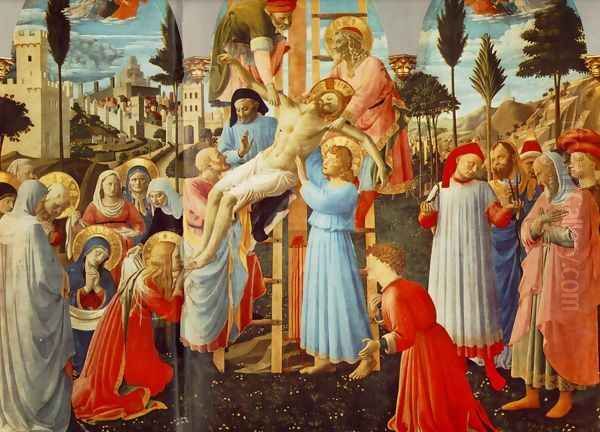
His early documented activity includes work as an illuminator, a testament to his meticulous skill and attention to detail. This training in the miniature scale of manuscript painting likely contributed to the jewel-like quality and exquisite finish of many of his panel paintings. Even in his larger fresco works, a certain precision and clarity of form can be traced back to this foundational experience.
The Dominican Path: A Life of Faith and Art
A pivotal moment in Guido di Pietro's life occurred around 1418-1420 when he, along with his brother Benedetto (also an illuminator), entered the Dominican Order at their recently reformed observant convent in Fiesole, a town overlooking Florence. Upon taking his vows, Guido adopted the name Fra Giovanni da Fiesole (Brother John of Fiesole). The Dominican Order, founded by Saint Dominic in the 13th century, emphasized preaching, teaching, and a life of prayer and study. For Fra Giovanni, his art became an extension of his religious vocation, a visual sermon intended to instruct, inspire, and lead viewers to contemplation of the divine.
His decision to become a friar was not a retreat from the world of art but rather a deepening of its purpose. His artistic output became inextricably linked with his spiritual life. Giorgio Vasari, the 16th-century biographer of artists, famously wrote that Fra Angelico would never take up his brush without a prayer and would weep when painting a Crucifixion. While perhaps romanticized, Vasari's anecdotes capture the profound piety that contemporaries associated with the artist and which seems to emanate from his works.
His life as a Dominican friar provided him with numerous opportunities for artistic commissions, primarily for Dominican establishments. He painted altarpieces, devotional panels, and, most famously, extensive fresco cycles. His brother Benedetto often assisted him, particularly with the more decorative elements or by managing the workshop.
The San Marco Frescoes: A Testament to Devotion
Perhaps Fra Angelico's most renowned achievement is the fresco decoration of the Dominican convent of San Marco in Florence. Rebuilt and expanded under the patronage of Cosimo de' Medici the Elder between the late 1430s and mid-1440s, San Marco became a significant center of Dominican life and learning. Fra Angelico, by then a respected and mature artist within the order, was entrusted with adorning its walls.
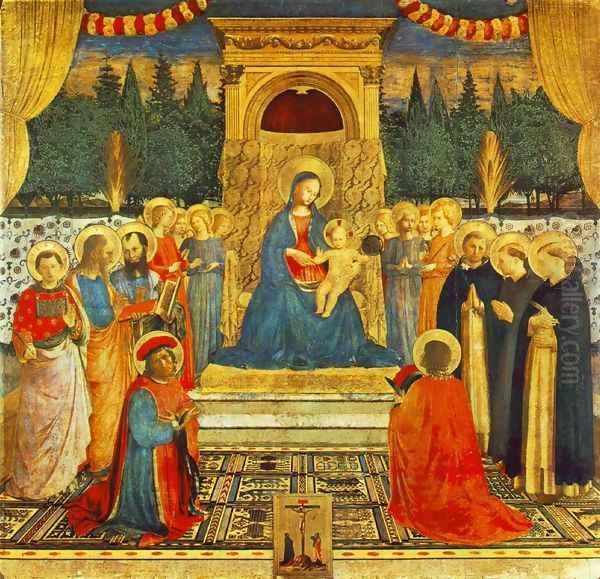
Working with assistants, including the notable Benozzo Gozzoli, Fra Angelico painted frescoes throughout the convent: in the cloister, the chapter house, the corridors, and, most intimately, in the individual cells of the friars. These frescoes were not mere decorations but integral components of the spiritual life of the community. They served as visual aids for meditation and prayer, bringing sacred stories and figures directly into the daily existence of the monks.
The frescoes in the public spaces, such as the magnificent Annunciation at the top of the dormitory stairs, are more elaborate and richly colored, intended for a wider audience. The Crucifixion with Saints in the Chapter House is a monumental and deeply moving composition, featuring a host of Dominican saints and founders contemplating the sacrifice of Christ, thereby linking the Order directly to the central mystery of the Christian faith.
In the friars' cells, the frescoes are generally simpler, more austere, and focused on a single, poignant scene from the life of Christ, often with a Dominican saint present as a witness or intercessor. These include various depictions of the Annunciation, the Noli Me Tangere, the Coronation of the Virgin, and the Transfiguration. The reduced compositions and restrained palettes of these cell frescoes were designed to foster quiet contemplation and personal devotion, minimizing distraction and focusing the mind on the spiritual essence of the scene. The figures are imbued with a gentle humanity, their gestures and expressions conveying deep piety and serene acceptance of the divine will.
The San Marco frescoes are remarkable for their innovative use of light and perspective, adapted to serve a spiritual purpose. While Angelico understood and employed the new Renaissance principles of spatial construction, his perspective is often intuitive rather than strictly mathematical, creating believable yet idealized spaces that enhance the otherworldly atmosphere of his scenes. Light, in particular, is used with extraordinary subtlety, often appearing to emanate from the figures themselves or to symbolize divine illumination.
Artistic Style: Bridging Gothic Grace and Renaissance Innovation
Fra Angelico's artistic style is a unique and harmonious synthesis of late Gothic elegance and Early Renaissance naturalism. He retained the lyrical beauty, delicate forms, and radiant color of the International Gothic style, but infused them with a new sense of volume, spatial depth, and psychological awareness characteristic of the emerging Renaissance.
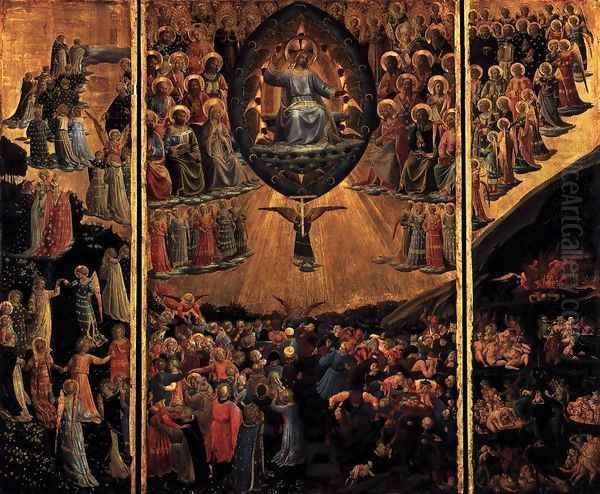
His use of color is one of his most distinctive features. He favored bright, clear hues, often employing expensive pigments like lapis lazuli for celestial blues and gold leaf for divine radiance and decorative details. His colors are not merely descriptive but also symbolic, contributing to the spiritual resonance of his paintings. The overall effect is one of luminosity and purity, creating an atmosphere of serene, heavenly beauty.
While aware of Masaccio's dramatic chiaroscuro, Fra Angelico's modeling is generally softer, his figures bathed in a gentle, unifying light that avoids harsh contrasts. This contributes to the overall sense of peace and harmony that pervades his work. His figures are typically slender and graceful, with sweet, contemplative expressions. They convey a sense of inner piety and spiritual grace rather than overt, worldly emotion.
In terms of composition, Angelico favored clarity and balance. His narratives are easy to read, with figures arranged in harmonious groups that guide the viewer's eye through the scene. He masterfully integrated figures into architectural or landscape settings, using perspective to create a sense of depth and order. Works like the Linaiuoli Tabernacle (1433), a commission from the linen workers' guild, showcase his ability to organize complex compositions with multiple saints around a central iconic image of the Virgin and Child, all within a coherent perspectival space.
He was also a gifted storyteller. Whether in large altarpieces with multiple predella panels (small narrative scenes at the base of the altarpiece) or in his fresco cycles, he conveyed sacred narratives with directness and emotional sincerity. Each scene is carefully crafted to highlight its spiritual significance, inviting the viewer to engage with the story on a personal level.
Key Commissions and Travels
Beyond San Marco, Fra Angelico undertook several other important commissions that took him to various cities in Italy. His reputation grew, and his skills were sought after by prominent patrons, including the Pope.
In Cortona, another Tuscan town, he painted several significant works, including a version of the Annunciation (now in the Museo Diocesano, Cortona) that is celebrated for its delicate beauty and innovative spatial arrangement. He also painted a polyptych for the church of San Domenico in Cortona.
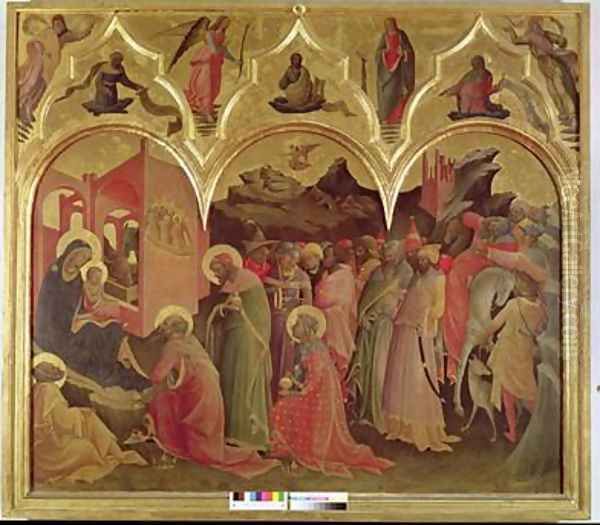
From 1445, Fra Angelico was called to Rome by Pope Eugenius IV (and later worked for his successor, Pope Nicholas V) to decorate the Chapel of the Holy Sacrament in St. Peter's Basilica (now destroyed) and later the Niccoline Chapel in the Vatican Palace. The frescoes in the Niccoline Chapel, depicting scenes from the lives of St. Stephen and St. Lawrence, survive and are considered masterpieces of his late style. These works show an increased monumentality and a more sophisticated handling of narrative and classical architectural elements, likely influenced by his exposure to the art and antiquities of Rome and perhaps by contact with other artists working in the papal city, such as Jean Fouquet.
He also worked briefly in Orvieto in 1447, beginning the decoration of the Chapel of San Brizio in the cathedral with frescoes of Christ in Judgment and Prophets. This project was left unfinished by Angelico and was later famously completed by Luca Signorelli with dramatic scenes of the Last Judgment.
These travels and prestigious commissions underscore Fra Angelico's status as one of the leading painters of his time. His ability to adapt his style to different contexts and scales, from intimate cell frescoes to grand papal chapels, demonstrates his versatility and artistic intelligence.
Notable Works and Their Significance
Beyond the San Marco cycle and the Niccoline Chapel frescoes, several individual works by Fra Angelico hold particular importance in art history:
The Annunciation: Fra Angelico painted this theme numerous times, each with unique nuances. The version from Cortona is renowned for its ethereal grace and the innovative depiction of the enclosed garden (Hortus Conclusus), symbolizing Mary's purity. The San Marco Annunciation at the head of the stairs is iconic for its simplicity and direct spiritual appeal, with the figures of Mary and the Archangel Gabriel set within a classicizing loggia. Another version, now in the Prado Museum, Madrid, is richer in detail and includes the Expulsion of Adam and Eve in the background, linking the Annunciation to the promise of redemption.
The Coronation of the Virgin: Again, a theme he revisited. The version in the Uffizi Gallery, Florence, is a celestial vision of Christ crowning his mother, surrounded by a multitude of saints and angels, all rendered with exquisite detail and radiant color. Another version, originally from San Domenico in Fiesole and now in the Louvre, Paris, is similarly spectacular, emphasizing the divine hierarchy and the joyous celebration in heaven.

The Deposition from the Cross (San Marco Museum, Florence): Originally painted for the Strozzi Chapel in Santa Trinita, Florence, this altarpiece is a poignant and complex depiction of Christ being taken down from the cross. It showcases Angelico's ability to convey deep emotion with subtlety and dignity, and to organize a large number of figures into a coherent and moving narrative. The work was begun by Lorenzo Monaco and completed by Fra Angelico, showing a transition in style.
The Last Judgment (San Marco Museum, Florence): This panel, likely an altarpiece, presents a panoramic view of Christ in Majesty, separating the blessed, who ascend to a beautifully rendered Paradise, from the damned, who are cast into a vividly imagined Hell. It demonstrates Angelico's mastery of complex narrative and his ability to evoke both heavenly bliss and infernal torment.
The Linaiuoli Tabernacle (San Marco Museum, Florence): Commissioned by the Arte dei Linaiuoli e Rigattieri (the guild of linen drapers and second-hand dealers), this large marble tabernacle with painted shutters is a significant work of Angelico's mature period. The central panel of the Madonna and Child Enthroned is flanked by saints, and the predella depicts scenes from the life of St. Mark. It shows his skill in integrating painting with a sculptural framework, a common practice in the Renaissance.
These works, among many others, highlight Fra Angelico's consistent artistic vision, his technical brilliance, and his profound ability to translate complex theological concepts into visually compelling and spiritually uplifting art.
Contemporaries and Influences
Fra Angelico did not work in an artistic vacuum. He was part of a vibrant Florentine art scene and was undoubtedly aware of, and influenced by, the innovations of his contemporaries.
His initial training likely under Lorenzo Monaco provided him with a strong foundation in the late Gothic style. However, the groundbreaking work of Masaccio in the Brancacci Chapel, with its powerful realism, use of perspective, and dramatic lighting, was a major turning point for Florentine art. While Angelico's temperament led him to a gentler, more spiritualized form of realism, he absorbed Masaccio's lessons on creating volumetric figures and coherent spatial environments.
The architectural theories and perspectival constructions of Filippo Brunelleschi, who famously designed the dome of Florence Cathedral, and the writings of Leon Battista Alberti on painting (De Pictura, 1435) provided a theoretical framework for the new Renaissance art, which Angelico would have assimilated. The sculptural achievements of Donatello and Lorenzo Ghiberti (whose Baptistery doors were a landmark of narrative relief) also contributed to the artistic ferment of the period, emphasizing naturalism, classical forms, and expressive power.
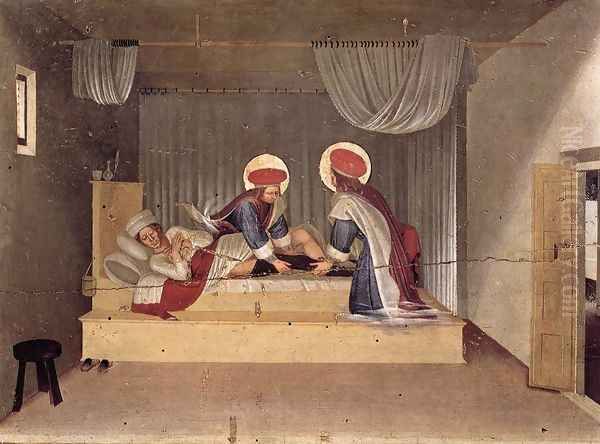
Fra Angelico also had a direct influence on other artists. His most famous assistant was Benozzo Gozzoli, who worked with him on the San Marco frescoes and in Rome. Gozzoli developed his own charming and narrative style, evident in his frescoes in the Magi Chapel in the Palazzo Medici Riccardi, but the influence of Angelico's clarity and color is discernible.
Other contemporaries whose work Angelico would have known include Paolo Uccello, with his obsessive interest in perspective; Filippo Lippi, another friar-painter whose style was more worldly and robust but who shared some patrons and artistic concerns; Andrea del Castagno, known for his powerful and somewhat austere figures; and Domenico Veneziano, whose experiments with light and color in works like the St. Lucy Altarpiece paralleled Angelico's own interests.
Later, Angelico's serene compositions, luminous color, and devotional sincerity resonated with artists of the Umbrian school, such as Pietro Perugino. Perugino, in turn, was the teacher of the young Raphael Sanzio, and some of the clarity and grace of Raphael's early Madonnas can be seen as an indirect inheritance from the tradition Angelico helped to establish. Even artists like Sandro Botticelli, with his lyrical lines and poetic sensibility, or the later Mannerist Pontormo, would have been aware of Angelico's legacy as part of their Florentine artistic heritage.
Character and Legacy: The "Beato Angelico"
Giorgio Vasari, in his Lives of the Most Excellent Painters, Sculptors, and Architects (1550, revised 1568), paints a portrait of Fra Angelico as a man of exceptional piety, humility, and gentleness. Vasari recounts that Angelico was so devout he would never alter or repaint a work once finished, believing it was as God willed it. He also notes Angelico's kindness and his dedication to his Dominican brothers. One famous story tells of Pope Nicholas V offering him the Archbishopric of Florence, which Angelico humbly declined, suggesting another, more suitable friar for the position.
These accounts, whether entirely factual or somewhat embellished, contributed to the legend of Fra Angelico as a "saintly painter." His art was seen as a direct reflection of his pure and devout character. The nickname "Angelico" (Angelic) was apparently given to him during his lifetime, or shortly after his death, in recognition of the heavenly beauty of his paintings and his own perceived saintliness. The title "Beato" (Blessed) was used informally for centuries, reflecting popular veneration.
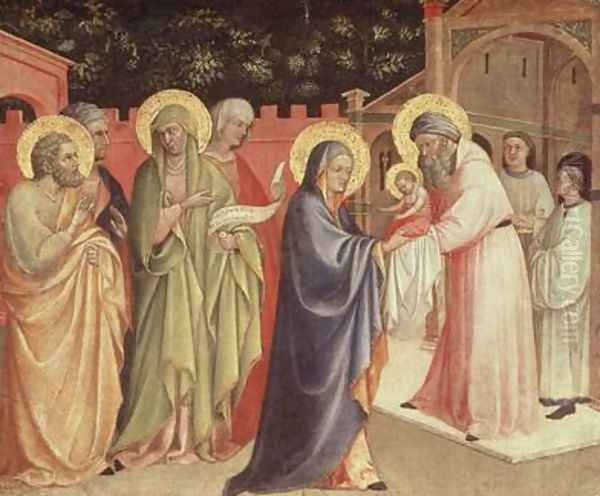
Fra Angelico died in the Dominican convent of Santa Maria sopra Minerva in Rome in 1455 and was buried in the church there. His tomb slab, with a sculpted effigy, still exists. His reputation for sanctity endured, and on October 3, 1982, Pope John Paul II officially beatified Fra Giovanni da Fiesole, formally recognizing him as "Beato Angelico" and naming him the patron saint of Catholic artists in 1984.
Enduring Influence on Art History
Fra Angelico's influence on the course of art history is significant, particularly in his role as a bridge between the late Gothic and Early Renaissance styles. He demonstrated how the new artistic discoveries of the Renaissance – perspective, naturalism, anatomical understanding – could be harnessed to serve profound spiritual ends. He showed that innovation did not require a rejection of tradition, but could enrich and deepen it.
His emphasis on clarity, luminous color, and serene beauty provided an alternative to the more heroic or dramatic styles of some of his contemporaries. He created an art that was both intellectually sophisticated and emotionally accessible, capable of inspiring devotion in the learned theologian and the lay worshipper alike.
His frescoes at San Marco, in particular, represent a high point of Early Renaissance mural painting, perfectly integrating art with its architectural and spiritual context. They established a model for monastic decoration that was influential for generations.
While later Renaissance artists moved towards greater dynamism, complexity, and often secular themes, Fra Angelico's work remained a touchstone for religious art. His ability to convey deep spiritual feeling with grace and sincerity continued to be admired. In an era of artistic upheaval and intellectual ferment, Fra Angelico created a body of work that speaks of peace, order, and unwavering faith, securing his place as one of the most beloved and respected masters of the Italian Renaissance.
Conclusion
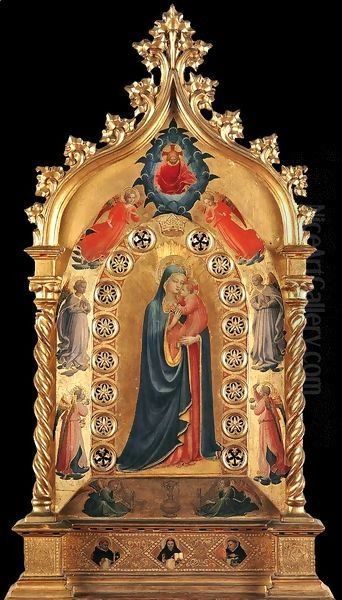
Fra Angelico, born Guido di Pietro, was more than just a technically skilled painter; he was a devout friar whose art was an expression of his profound faith. His unique ability to fuse the decorative elegance of the Gothic tradition with the naturalism and intellectual rigor of the Early Renaissance resulted in works of extraordinary beauty and spiritual depth. From the intimate frescoes in the cells of San Marco to the grand altarpieces and papal commissions, his paintings radiate a serene, otherworldly light, inviting contemplation and uplifting the human spirit. As "Beato Angelico," the Blessed Angelic Friar, he remains a towering figure in the history of Western art, a painter whose life and work continue to inspire artists and art lovers around the world.